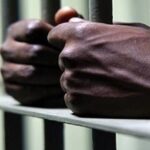Nyahbingi drumming by Rasta Village Live, featuring Prince Tebah and vocals by Ras Iziniga Ion (right) added to the opening of the Rastafari exhibition at National Museum West in the Montego Bay Cultural Centre in St James.
ST JAMES, Jamaica – The National Museum, located in the Montego Bay Cultural Centre, mounted an exhibition that explores the history and nature of the Rastafari movement.
It is expected to be to be on display for a year.
Speaking at the opening of the exhibition recently, Executive Director of the Tourism Enhancement Fund (TEF) Clyde Harrison described the mounting of the exhibition and the presence of members of the Rastafari community as “a journey with some distance still left to go”, but which stood out as a testament to the spirit of the Jamaican people.
From the viewpoint of Rastafari, Harrison commended “the strength of their culture, their insistence on being themselves and being accepted for who they are and what they are about”. For other Jamaicans, “for the police, the government to accept them also, it’s the spirit of the Jamaican people in its full glory; the Rastafari and everybody else coming together to say welcome rasta,” he added.
Speaking to TEF’s involvement in the exhibition, Harrison said while the fund promoted tourism extensively, the fact was that “we promote what is good for Jamaicans and for the tourist to enjoy”.
He said: “We are funding the museum and we will continue to do so; we will not ignore the culture of the people nor what is important to us and when we do this it speaks to our spirit so we are very proud to be associated with this endeavour and all the others that we have put forward for the people of Jamaica and the tourists to enjoy.”
Member of Parliament for Central St James, Lloyd B Smith welcomed the exhibition as a special undertaking to pay tribute to Rastafari.
“This exhibition, I am sure, will help to enlighten the general populace about the fact that Rastafari is a bona fide, genuine part of the Jamaican culture and history. It is indeed a very integral part of our national psyche and this has been embodied in the fact that wherever you go in the world Rastafari can be seen in one form or the other.”
Meanwhile, Director of the National Museum Jamaica Dr Johnathan Greenland noted that it was the first major exhibition for Museum West. He disclosed that the exhibition ran at the Smithsonian Museum in Washington DC in the USA for many years before the Rastafari community negotiated for it to be brought to Jamaica. Its first stop was in Kingston where it was expanded extensively.
Through artefacts, images, videos, and text, this exhibition seeks to explore the history and nature of Rastafari, including: the revelation of Rastafari, the philosophy and evolution of the Rastafari movement, the visit of Haile Selassie to Jamaica, and the impact of Rastafari on music. It also provides a historical review of the tribulations experienced by members, in particular the events surrounding Coral Gardens in April, 1963.
Following a year-long run in Montego Bay, it will be turned over to the Rastafari community for it to be housed at a permanent learning centre to be established by the ethnic group.
First Man at the Rastafari Indigenous Village in St James also applauded the collaboration of the Government of Jamaica and the Rastafari Millennium Council in bringing about the exhibition.
“Especially here in Montego Bay, the Rastafari community faced one of our worst challenges; this is where the Coral Gardens incident took place, (and) right here in the centre of the city is where Sam Sharpe and all of our African people were ‘downpressed’ and for us to be here eternally burning Babylon and then find that the same system now can speak of who Rastafari is and what Rastafari represents over that period of time, that is a great achievement,” he proclaimed.










